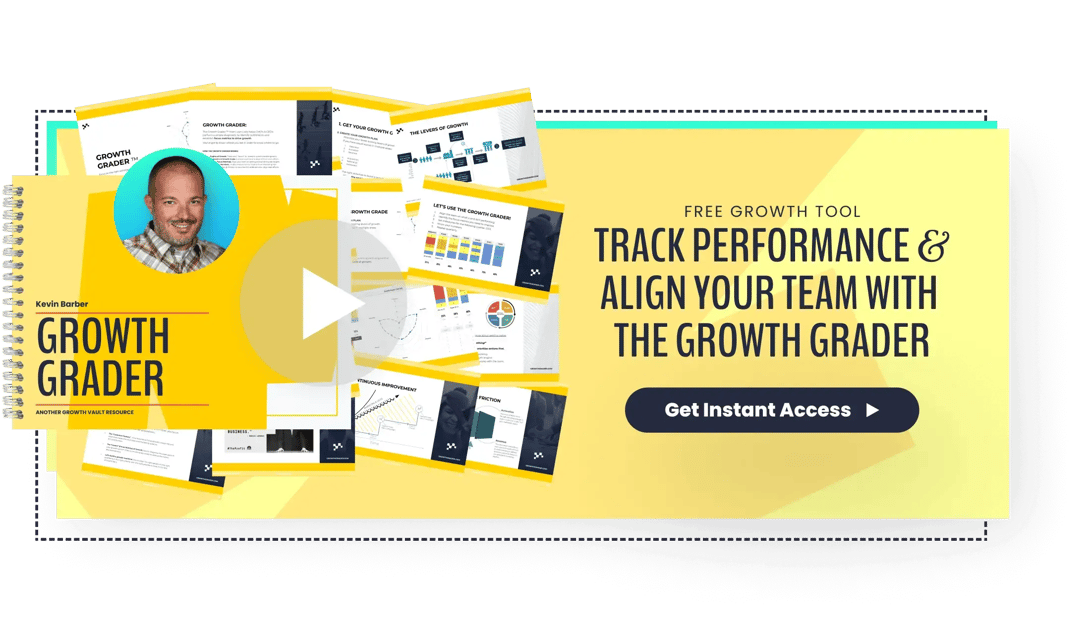The B2B buying process is rarely straightforward.
There are often multiple steps and stakeholders. There are also various funnel types to consider.
It’s not as simple as attracting customers to your website, encouraging them to fill out a form, nurturing them with emails, and getting them to buy.
That’s a pretty dream. But it’s rarely the case.
You’re probably thinking, “Well, if that’s the case, what’s the point in building a growth marketing funnel?”
Where most companies go wrong is failing to be deliberate about their funnel. You can’t guess.
You can’t just replicate someone else’s funnel, but you can (and should) borrow ideas and get inspiration from other funnels.
To build a successful funnel, you must know who you’re targeting, how best to reach and interact with them, and get feedback from customers and prospects to improve your funnel.
This article will show you how to build your growth marketing funnel so you can confidently go to market and start driving massive growth in your company.
What is a Growth Marketing Funnel?
Before I answer that question, let’s remind ourselves of what growth marketing is. Growth marketing is a full-funnel approach to marketing. It aims to take potential customers on a journey from virtual strangers to brand advocates.
Whereas traditional marketing focuses on getting new business in the door, growth marketing is crucial in turning new customers into fans. To that end, think of a growth marketing funnel as a visual representation of that process.
Visualize a prospect’s journey from becoming aware of your product or service to becoming a revenue-generating customer. Along the way, the process includes multiple stages with unique goals, metrics, and strategies.
The best way to improve the performance of your growth marketing funnel is to optimize the entire customer journey.
Building a funnel is crucial to maximizing revenue and customer acquisition while minimizing acquisition costs. Identifying and understanding how each stage works can eliminate friction in the sales process and maximize your marketing budget.
At Lean Labs, we believe wholeheartedly that growth marketing is the best way to drive success for our clients. We start by working with you to understand your buyers, competitive landscape, and market.
Together, we identify core metrics and KPIs that matter most to you and then build a customized growth marketing strategy to optimize each stage of your funnel. Want to know more? Book a Growth Mapping Session today, and let’s start planning for growth.
What are the stages in a growth marketing funnel?

- Awareness: Your potential customer becomes aware of your product or service, often through marketing campaigns, social media, word-of-mouth, or search engines. This stage aims to capture your target audience’s attention and generate interest in your product.
- Acquisition: Your prospect becomes a lead by providing their contact information, such as email, phone number, or social media handle. This stage aims to convert your prospect into a qualified lead and begin building a relationship with them.
- Activation: The activation phase aims to turn leads into active users or customers by encouraging them to sign up for a free trial, attend a demo, or use a specific feature. During this stage, you are providing value and building trust with your lead so that they become a paying customer.
- Revenue: Your lead becomes a paying customer by purchasing a subscription or upgrade. This stage aims to close the sale and turn your lead into a paying customer after building a relationship and providing value before the sale.
- Retention: This stage aims to build a long-term relationship with your customer, maximize their lifetime value, and provide excellent customer service and personalized communication after their purchase.
- Reputation: Lastly, satisfied customers become brand advocates by leaving positive reviews, referring friends and family, and sharing their experiences on social media. The reputation phase aims to create a positive word-of-mouth cycle that fuels growth by building a solid brand reputation.
As you can see, each stage of the funnel is crucial. You can’t miss any steps, and to maximize each stage, you’ll need a plan and a way to track and analyze performance. This is where key performance indicators (KPIs) come into play.
If you want a detailed breakdown of the growth marketing metrics you must track, check out this article: The 6 Growth Marketing Metrics Every Business Needs to Track (& How to Track). For now, here’s a quick breakdown.
- Awareness: Traffic metrics, such as impressions, page views, bounce rates, and top traffic sources.
- Acquisition: Marketing Qualified Leads (MQLs), including number of MQLs and lead scoring. Also, track conversion rates for landing pages and signup forms.
- Activation: Sales Qualified Leads (SQLs) generated, so you know whether your marketing efforts bear fruit. Activation rates of free trials, demos, and onboarding.
- Revenue: Monthly recurring revenue (MRR), customer acquisition cost (CAC), marketing ROI, and close sales rate.
- Retention: Churn and customer lifetime value (CLTV), average usage time, and feature adoption rate.
- Reputation: Number of reviews, case studies, referral leads, and net promoter score (NPS).
How is the Growth Marketing Funnel Different Than the Traditional Marketing Funnel?

We touched on this earlier, but for a visual representation, you can see that traditional marketing focuses on the first two funnel stages: awareness and acquisition. While it’s essential to bring new customers in, what happens next?
The growth marketing funnel answers that question. You create a funnel that feeds itself by dialing in the next four stages. In turn, the retention and reputation stages feed awareness and acquisition.
Developing a Growth Marketing Funnel Strategy
Developing a growth strategy and creating your funnel intertwine. As you build your growth strategy, you’ll see how your funnel shapes your ideas and helps execute your plan.
Our article “Build a World-Class Growth Marketing Strategy in 10 Simple Steps” provides a detailed roadmap to building your strategy. Let’s look at the essential steps you must take.
- Understand Your Ideal Customer: Know who you’re marketing to by developing a clear understanding of your ideal customer persona (ICP). Use customer research and development to create value and understand your customer’s fears, desires, and frustrations.
- Define Your Unique Value: Craft a compelling Unique Value Proposition (UVP) that communicates what you do and the result it enables your customers to achieve. Highlight what makes your solution ideally suited to serve the needs of your ICP.
- Gather Your Initial Data: Determine the health of your funnel from top to bottom. This informs building your new funnel or re-structuring your existing funnel. Include conversion rates along with customer surveys, feedback, and reviews.
- Start Tracking Everything: Track every interaction with potential customers (and current customers). Look for opportunities and gaps to plug.
- Decide Your Growth Priorities: Where are the opportunities to grow? Remember your overall goal, which should be the north star metric, revenue growth. Are there specific parts of your sales funnel where leads drop off? How can you improve that conversion rate?
Now that you’ve laid the foundation, you can start planning how to improve your growth marketing funnel. You can now choose your marketing channels and tactics, create your marketing assets, and test and optimize your strategy.

Image source
Building Your Growth Marketing Funnel
You can map your customer journey with the information you gather and organize. A simple way to break down your funnel stages is to think of the top, middle, and bottom of your funnel and how you can optimize each step.
Define Marketing Qualified Lead Criteria
Understanding your ideal customer informs how you’ll market to them. Think of lead criteria as all the things you need to know about your customer:
- Demographic: Their age, location, role or title, and industry.
- Firmographic: Type of organization, number of clients, revenue, who their competitors are.
- Psychographic: Their dreams, desires, how they want to work, where they want to go, and what they believe.
- Behavioral data: How your prospect interacts with your business, such as visiting a website, downloading a whitepaper, attending a webinar, or requesting a demo.
- Technographic: Whether they’re open to adopting new technology or they’ve used premium tools in the past.
- Budget and timeline: The budget and timeline of your prospect’s purchase plans.
Related: [ULTIMATE GUIDE] Lead Generation Through Content Marketing
Top-of-the-Funnel (TOFU) Strategies
At the top of the funnel, you focus on creating awareness and attracting leads. This is often (but not always) the first step in the customer journey. How can you generate leads?
Organic, high-quality content is a long-term play that drives results. You’ll attract ideal customers if your content is relevant and helpful. Content includes your blog, videos, webinars, and social media posts.
Pro tip: Go where your customers are. If they often hang out on social media, focus your content distribution on social channels. If, based on customer surveys, your ideal customers like to consume video content, focus on video content.
Other plays include:
- Creating engaging content and running targeted ads on social media platforms is a great way to reach a large audience and build brand awareness.
- Help potential customers find your business when they search for relevant keywords by optimizing your website for search engines. Using targeted keywords, building high-quality content, and building backlinks can help you rank higher on search engines and attract more visitors to your website.
- Reach a larger audience and build brand awareness by partnering with influencers with a large following. Attract new leads and increase your visibility by creating sponsored content, running giveaways, and promoting your brand on social media.
- Hosting a webinar or event to help you create relationships with potential customers. You can build your brand and attract new leads by offering valuable content and networking opportunities.
Middle-of-the-Funnel (MOFU) Strategies
In the middle of the funnel, focus on providing massive value and building interest. Lead nurturing is about warming up prospects and showing them that your products and services solve their problems.
Content is still the best play here. You can use well-crafted emails to engage potential customers. Did they download your lead magnet? Or sign up for a free trial? Now is your chance to wow them. What else will they find valuable?
Segmenting your audience and personalizing the content they see is good practice. Make it easy for them to see how you can help them. Demo videos, free trials, case studies, and testimonials demonstrate how your prospects can solve their problems using your product.
You want to educate, entertain, and inspire your audience to take action and continue through your funnel.
Bottom-of-the-Funnel (BOFU) Strategies
The bottom of the funnel is about closing deals and turning leads into customers. At this point, leads are ready to buy; they’re unsure if they should buy from you. Help them make a decision.
You can use free trials to provide a hands-on experience using your solution. It’s risk-free for potential customers, and you can encourage them to take action and make a purchase. Personalized offers are another great play. Tailor your offers and show potential customers you understand their needs and desires.
High-quality customer support is paramount here. You need to build trust and confidence. With quick and effective support, you can address any concerns or questions and give potential customers the confidence to purchase.
Related: SaaS Content Writing: How to Attract, Engage, and Delight Your Customers
Sales Enablement
Provide your sales team with the tools to engage effectively with leads. When you align sales and marketing teams, you create a cross-functional growth team that eliminates silos. Instead of producing leads that the sales team ignore, marketers can create content that answers critical buyer questions.
To align sales and marketing teams:
- Get them to agree on lead qualification. What constitutes an SQL?
- Foster regular interaction, such as regular meetings, to keep track of shared goals.
- Regularly analyze CRM data. Review each MQL - were they truly qualified? Where did they drop off? What objections did they have?
- Ensure marketing creates assets that sales can use at every pipeline stage, such as educational content, common objections videos, pricing guides, and testimonial videos.
- Track everything on one dashboard so both teams can see the customer journey.
You’re Not Done Yet
Remember, your funnel doesn’t end with your lead becoming a customer. Retention and reputation are essential stages in your funnel. Here, you’ll create brand evangelists who will tell the world (OK, maybe just their friends, family, and peers) about your solution.
This feeds back into the top of the funnel. HubSpot uses the flywheel analogy. A flywheel keeps spinning because it has momentum. Happy customers are your best marketers and are the key to sustainable growth.

Image source
At this stage, you want to stay in touch with customers. Ask for regular feedback. Got a new feature? Have them try it out first. Give them the first look. You can optimize your funnel and improve your products and services with their feedback.
A Checklist for Building Your Growth Marketing Funnel
Alright, you’ve got a lot of information to take action on. Here’s a handy checklist to help organize your steps.
- Use surveys, interviews, and analytics to determine your ideal customer’s pain points, needs, and desires.
- Using the data collected in step one, create fictional representations of your ideal customers and tailor your marketing messages, content, and offers accordingly.
- Use the information collected in steps one and two to map your customers’ journey, including the different stages, touchpoints, and actions they take.
- Develop content and marketing campaigns that cater to each stage of the funnel, such as blog posts, whitepapers, webinars, email campaigns, social media posts, and more.
- Test and optimize your funnel based on the data you collect.
Tools to Help Build Your Growth Marketing Funnel
Along the way, you might need some help building your funnel. We can point you in the right direction! We have a couple of free tools you can use today, and we also have recommendations for tools that will make designing your funnel a breeze.
1. The Growth Grader

Our Growth Grader diagnostic tool lets you discover what’s working in your current setup and what’s underperforming. You’ll diagnose the vulnerable parts of your growth system and identify what’s causing friction within the buyer journey.
You’ll identify the metrics you need to improve, track the right KPIs, and find opportunities to drive growth. Your entire team can focus on the metrics that matter.
Bonus: In a quick tutorial video, we walk you through the exact process of using the Growth Grader.
Here’s the link again: The Growth Grader
2. The Growth Playbook

Another free tool from us! The Growth Playbook lets you peek behind the curtain and see how we drive massive growth for our clients. You’ll discover:
- The exact principles behind our Growth Strategies - so you can focus on the right steps in the right order for maximum momentum.
- Specific breakdowns of how we Budget for Growth - so you can see results & ROI even if starting with a small growth budget.
- The secret is how we Guarantee Results - which is challenging to do, so we’ll show you how we’ve created our biggest wins.
Here’s the link again: The Growth Playbook
3. HubSpot
HubSpot is our CRM of choice. If you want to build a website (for free), you can. Manage contacts? Yep. Execute powerful marketing strategies, track progress, and deliver ROI? Yep. Enable sales and marketing team alignment? Yep. Provide impeccable customer service? Yep.
HubSpot is the complete solution for growing businesses. You can manage your sales pipeline like a boss, and there are analytics tools galore. Best of all, you can start for free. HubSpot grows with you.
Book a no-obligation call today to chat with us about HubSpot. We’ll help you determine if HubSpot is a good fit for your company and walk through what implementation could look like for you.
Build A Growth Marketing Funnel the Right Way
Many companies struggle with marketing funnels because they do the right things in the wrong order.
It’s no use building a funnel based on what you think is the right way. You must understand your buyers and the competitive landscape, and make sure your funnel makes sense for your market, buyer, and company.
By following the steps above, you can build a growth marketing funnel that attracts qualified traffic, converts leads into customers, and ultimately drives business growth.
At Lean Labs, we use the growth funnel concept to great effect with all of our clients. Want to find out how? We’ll tell you our secrets. Unlock the Growth Playbook today!







